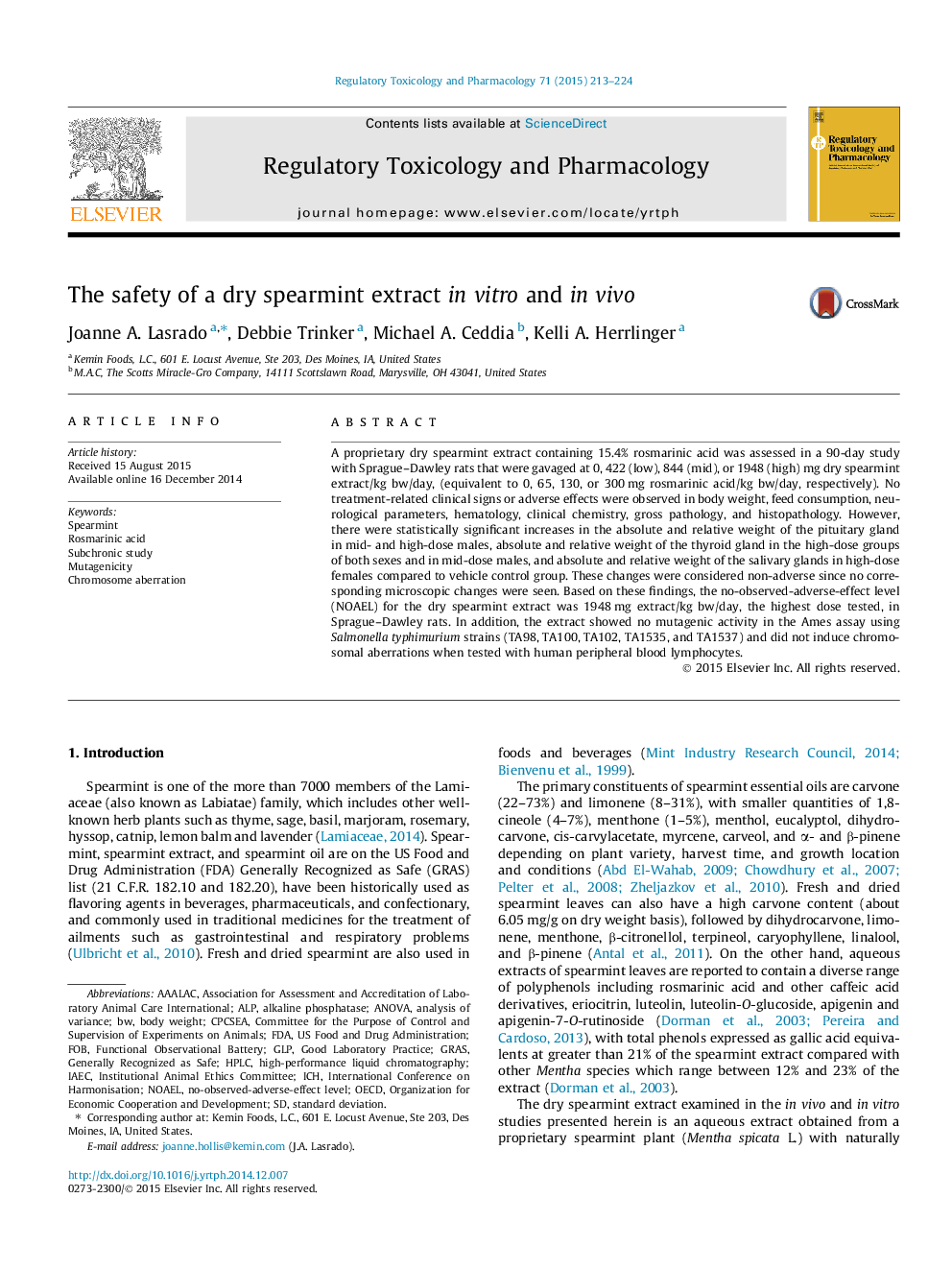| Article ID | Journal | Published Year | Pages | File Type |
|---|---|---|---|---|
| 5856494 | Regulatory Toxicology and Pharmacology | 2015 | 12 Pages |
â¢A proprietary spearmint extract standardized to rosmarinic acid was assessed.â¢The NOAEL following 90 days of oral administration to rats was 1948 mg/kg bw/day.â¢Dry spearmint extract was non-mutagenic in the Ames assay.â¢Dry spearmint extract was non-clastogenic in the chromosome aberration test.
A proprietary dry spearmint extract containing 15.4% rosmarinic acid was assessed in a 90-day study with Sprague-Dawley rats that were gavaged at 0, 422 (low), 844 (mid), or 1948 (high) mg dry spearmint extract/kg bw/day, (equivalent to 0, 65, 130, or 300Â mg rosmarinic acid/kg bw/day, respectively). No treatment-related clinical signs or adverse effects were observed in body weight, feed consumption, neurological parameters, hematology, clinical chemistry, gross pathology, and histopathology. However, there were statistically significant increases in the absolute and relative weight of the pituitary gland in mid- and high-dose males, absolute and relative weight of the thyroid gland in the high-dose groups of both sexes and in mid-dose males, and absolute and relative weight of the salivary glands in high-dose females compared to vehicle control group. These changes were considered non-adverse since no corresponding microscopic changes were seen. Based on these findings, the no-observed-adverse-effect level (NOAEL) for the dry spearmint extract was 1948Â mg extract/kg bw/day, the highest dose tested, in Sprague-Dawley rats. In addition, the extract showed no mutagenic activity in the Ames assay using Salmonella typhimurium strains (TA98, TA100, TA102, TA1535, and TA1537) and did not induce chromosomal aberrations when tested with human peripheral blood lymphocytes.
